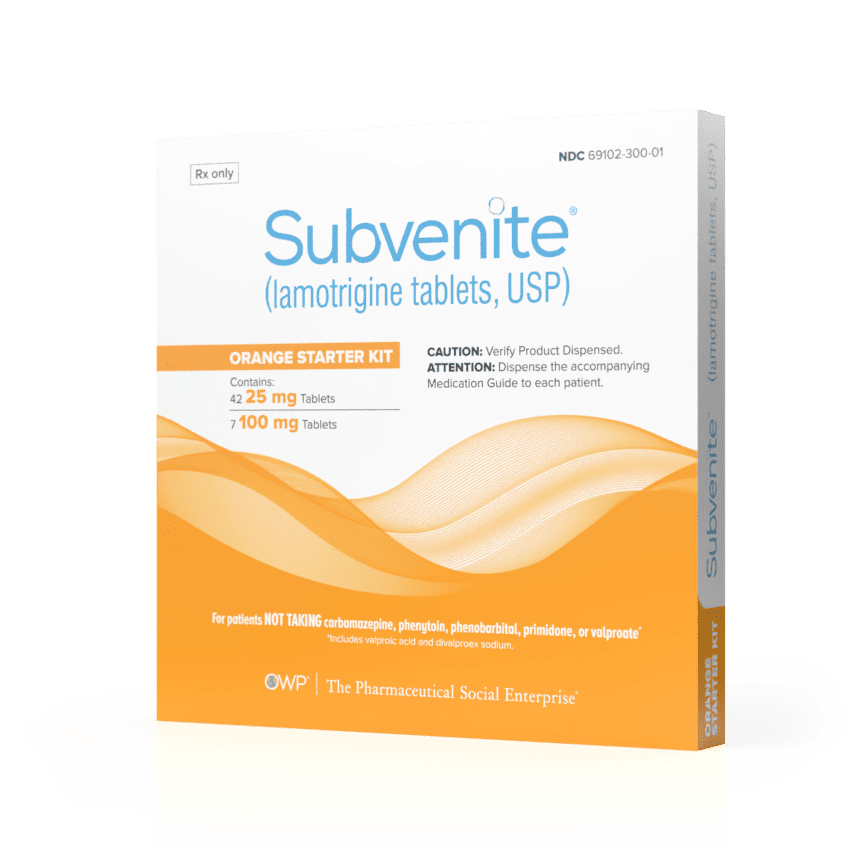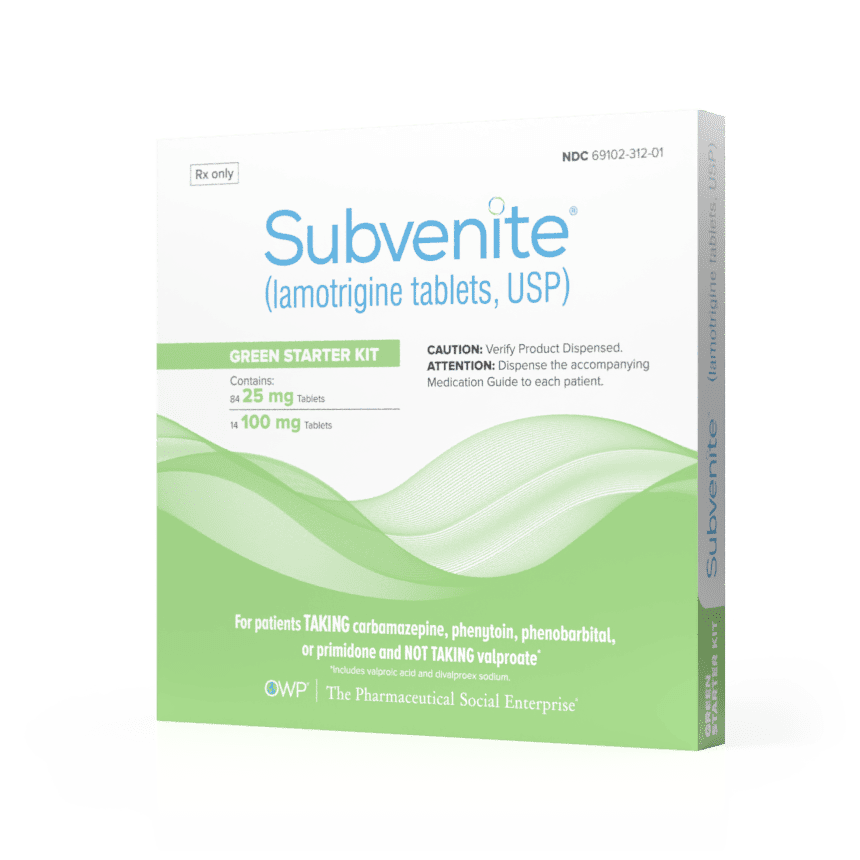Talk with your prescribing healthcare provider to see if the branded generic Subvenite Starter Kit is right for you.
After you are prescribed a Lamotrigine Starter Kit…
If you have commercial insurance download a patient savings card here.
For prescriptions through ASPN Pharmacies, you will receive a link within 24 hours to get started.
Available only through ASPN Pharmacies. Within 24 hours of receiving your prescription, ASPN will text you a link to get started. Or, you may speak to a customer care advocate by calling 1-866-878-4625 between 8:30 AM – 8:00 PM ET.
ASPN can provide information on:
- Your out-of-pocket cost
- Financial assistance for eligible patients
- Free prescription delivery
- Prescription status updates
For What Conditions is Subvenite Indicated?
SUBVENITE (lamotrigine tablets, USP) are indicated for:
Epilepsy—adjunctive therapy in patients aged 2 years and older:
- partial-onset seizures.
- primary generalized tonic-clonic seizures.
- generalized seizures of Lennox-Gastaut syndrome.
Epilepsy—monotherapy in patients aged 16 years and older: Conversion to monotherapy in patients with partial-onset seizures who are receiving treatment with carbamazepine, phenytoin, phenobarbital, primidone, or valproate as the single antiepileptic drug.
Bipolar disorder: Maintenance treatment of bipolar I disorder to delay the time to occurrence of mood episodes in patients treated for acute mood episodes with standard therapy.

For What Conditions is Lamotrigine Indicated?
SUBVENITE (lamotrigine tablets, USP) are indicated for:
Epilepsy—adjunctive therapy in patients aged 2 years and older:
- partial-onset seizures.
- primary generalized tonic-clonic seizures.
- generalized seizures of Lennox-Gastaut syndrome.
Epilepsy—monotherapy in patients aged 16 years and older: Conversion to monotherapy in patients with partial-onset seizures who are receiving treatment with carbamazepine, phenytoin, phenobarbital, primidone, or valproate as the single antiepileptic drug.
Bipolar disorder: Maintenance treatment of bipolar I disorder to delay the time to occurrence of mood episodes in patients treated for acute mood episodes with standard therapy.

Orange Starter Kit: Total 49 Tablets
(42 X 25mg) (7 X 100mg)
NDC 69102-300-01

Blue Starter Kit: Total 35 Tablets
(35 X 25mg)
NDC 69102-306-01

Green Starter Kit: Total 98 Tablets
(84 X 25mg) (14 X 100mg)
NDC 69102-312-01
In addition to nationwide retail pharmacy availability, OWP Patient Support administered by ASPN Pharmacies provides a dedicated service designed to help with access to Subvenite Starter Kits.
*Lamictal® is a registered trademark of GlaxoSmithKline, Inc.
For general questions or inquiries please contact us at: info@owppharma.com
For SUBVENITE Starter Kit questions please contact us at: medinfo@owppharma.com
To report safety-related concerns please contact us at: safety@owppharma.com
OWOS1062V8 3/25
